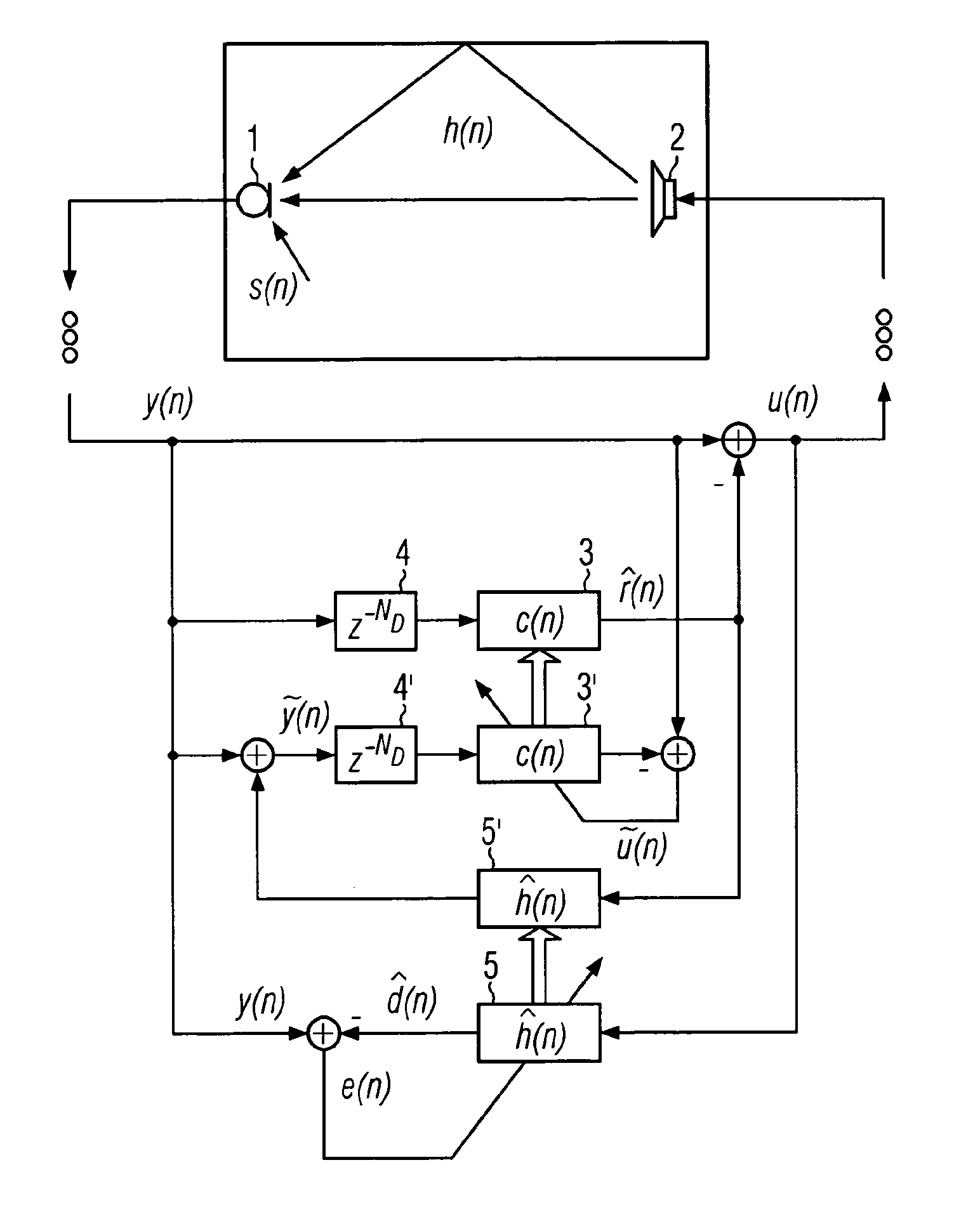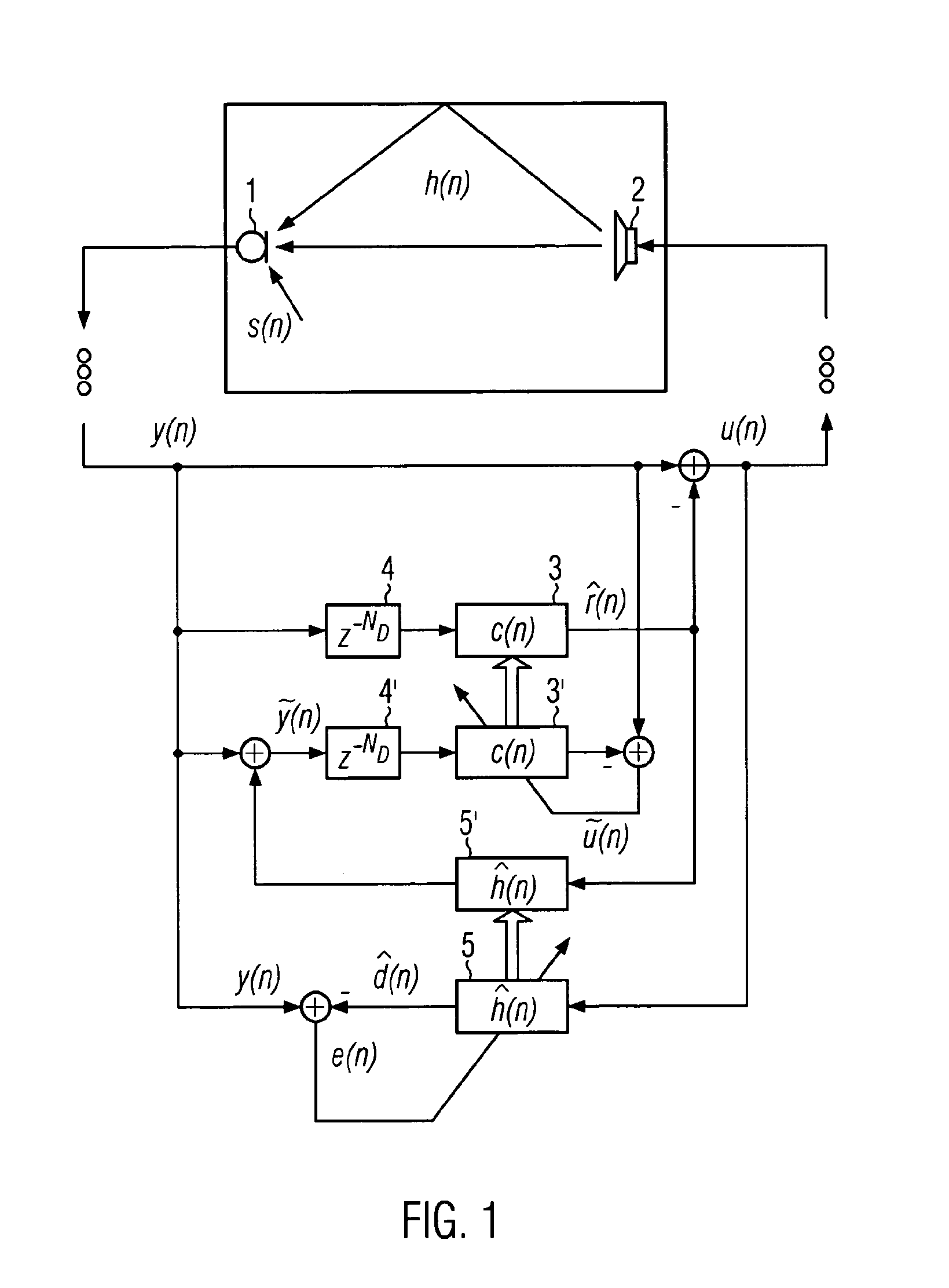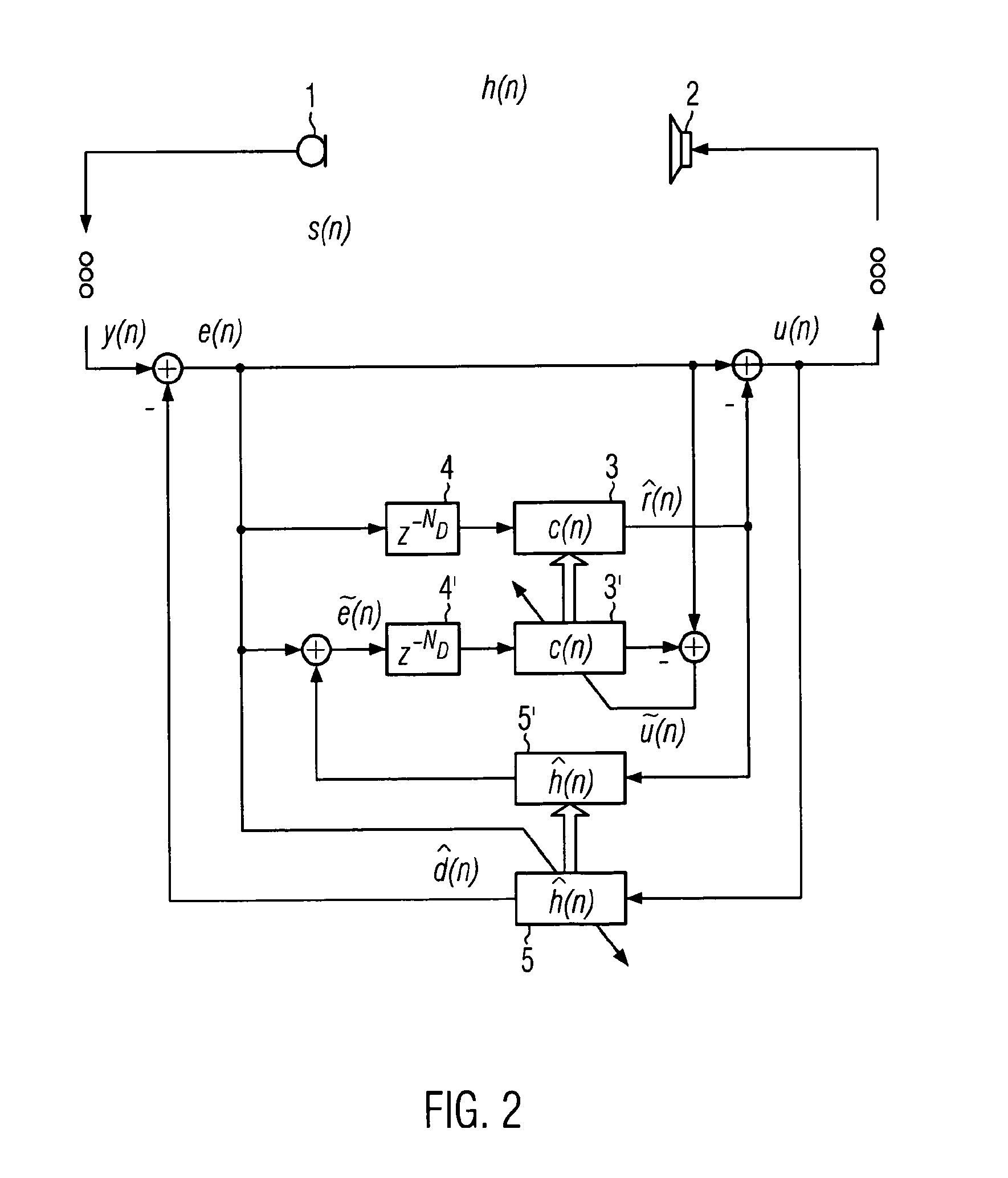Feedback reduction system
a technology of feedback reduction and feedback frequency, which is applied in the direction of transducer casings/cabinets/supports, transducers, electric transducers, etc., can solve the problems of complete breakdown of communication, inability to adjust to temporally changing dominant feedback frequency, and severe affecting the quality and intelligibility of voice conversation
- Summary
- Abstract
- Description
- Claims
- Application Information
AI Technical Summary
Benefits of technology
Problems solved by technology
Method used
Image
Examples
Embodiment Construction
[0011] The above mentioned problems are solved by a method for audio signal processing with feedback reduction according to claim 1 and a system for audio signal processing with feedback reduction according to claim 14.
[0012] According to claim 1 it is provided a method for processing a microphone signal to obtain an output signal with acoustic feedback reduction, comprising
processing the microphone signal by an adaptive feedback suppression filtering means;
processing the microphone signal by an adaptive feedback compensation filtering means; and wherein
the processing by the adaptive feedback suppression filtering means is performed in dependence on the processing by the adaptive feedback compensation filtering means.
[0013] It also is provided a system for audio signal processing with feedback reduction, comprising an adaptive feedback compensation filtering means and an adaptive feedback suppression filtering means configured to be adapted on the basis of the adapted filter...
PUM
 Login to View More
Login to View More Abstract
Description
Claims
Application Information
 Login to View More
Login to View More - R&D
- Intellectual Property
- Life Sciences
- Materials
- Tech Scout
- Unparalleled Data Quality
- Higher Quality Content
- 60% Fewer Hallucinations
Browse by: Latest US Patents, China's latest patents, Technical Efficacy Thesaurus, Application Domain, Technology Topic, Popular Technical Reports.
© 2025 PatSnap. All rights reserved.Legal|Privacy policy|Modern Slavery Act Transparency Statement|Sitemap|About US| Contact US: help@patsnap.com



